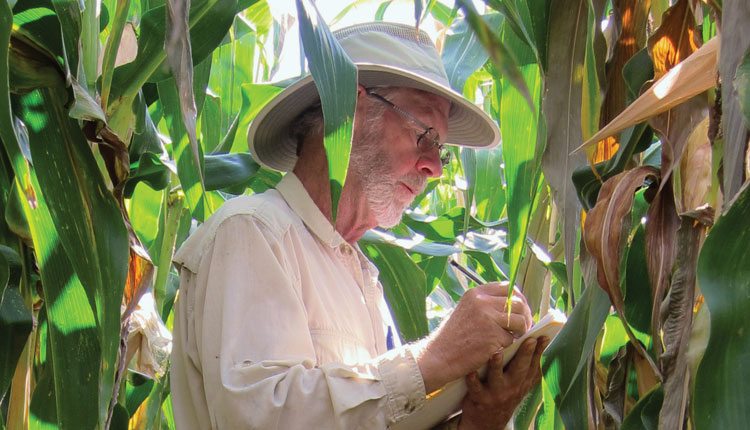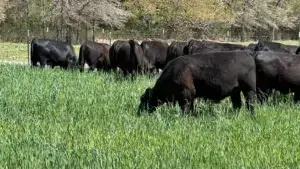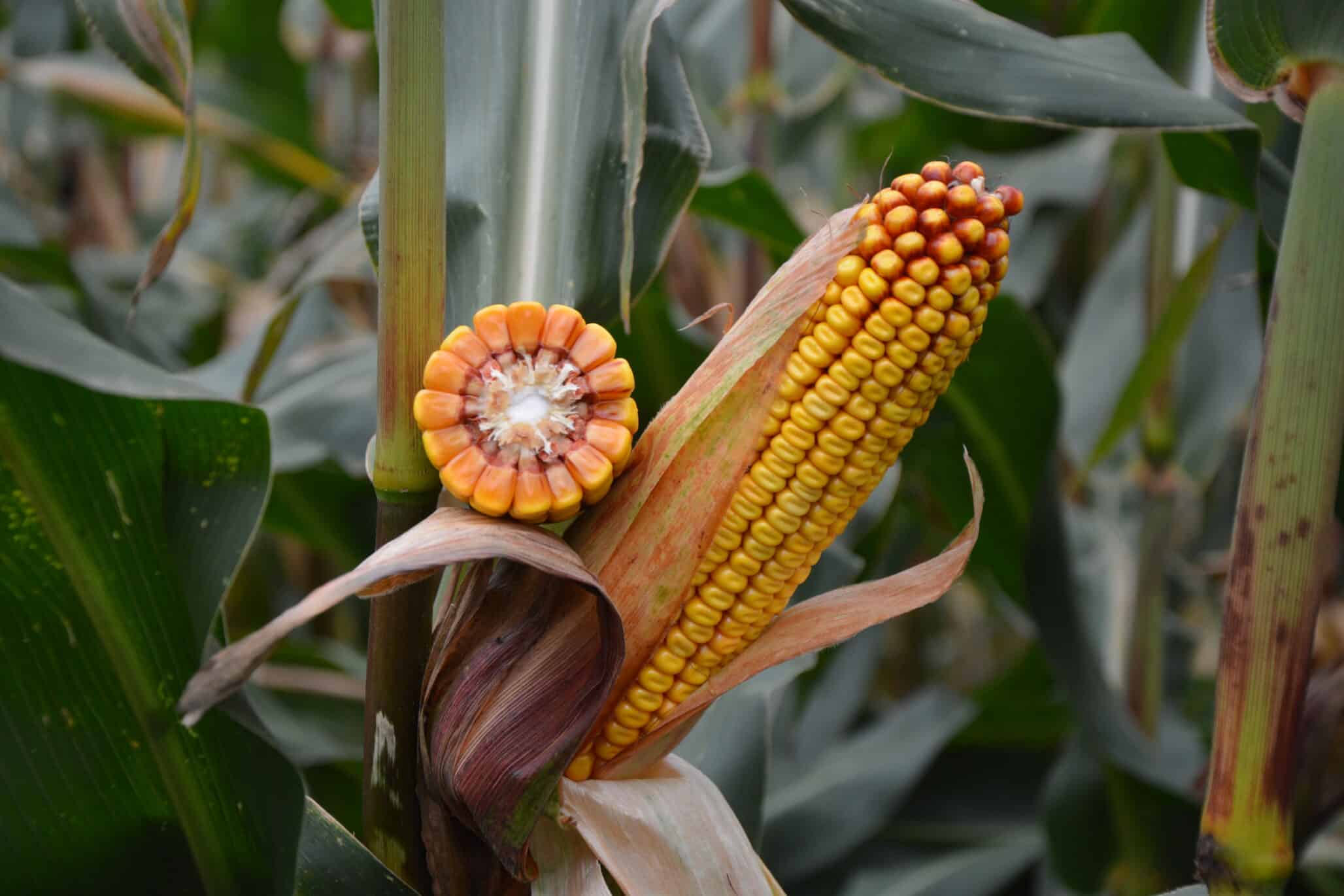Francis Glenn focuses his efforts on breeding corn for silage.
As a kid growing up on a dairy farm in eastern Ontario, Francis Glenn knew he wanted to leave a legacy in agriculture. What he probably didn’t realize back then was how big an impression he would have, not only in Canada but also around the world.
Today, Glenn is recognized as a true visionary in breeding hybrid corn. The 68-year-old developed the world’s first leafy corn varieties three decades ago, and has numerous other breakthroughs in breeding corn varieties for silage under his belt.
Inspired to pursue corn research work during his undergraduate studies in the late 1960s, Glenn graduated with a doctorate in corn breeding. He then joined Warwick Seed as a corn-breeding assistant and became the director of corn research when Warwick was purchased by Pfizer in 1976.
Four years after that, Glenn stepped out on his own and founded Glenn Seed Ltd. near Blenheim, Ont., where he continues to breed foundation seed for hybrid corn production. During the course of 35 years, Glenn worked to build a stellar reputation in the seed genetics trade.
Glenn’s earliest breakthrough was the development of an extra leafy corn, a gene that produced taller plants with more leaves, resulting in an exceptional silage variety.
Glenn, whose approach was a departure from the conventional concept of producing corn for grain, started breeding with this “leafy” gene in the mid-1980s.
“My selection criteria for silage hybrids were determined by finding out the specific needs of dairy farmers,” he says. “Increased understanding of their growing, harvesting, storage and feeding requirements helped to shape the type of leafy silage varieties that I brought to the marketplace.”
To produce optimal silage hybrids, Glenn selected for the following characteristics:
• High total yield with high grain content.
• Higher above the ear leaf number and taller, more flexible above the ear stalk, which is composed of more digestible fiber.
• Lower ear position on the plant, resulting in a decrease in the plant’s total lignin.
• Stalks that are adequately strong to stay erect until silage harvest.
• Large ears with kernels that are large and composed of softer, slower drying, lower test weight starch.
• Slow kernel maturation and dry down along with slow total plant drying.
He launched the first leafy hybrid to the commercial market in 1992. Today, about 20 percent of the silage acres planted in the United States use genetics from Glenn Seed.
Photo: Glenn Seed.
Success in a Niche Market
He saw a niche that needed to be filled, as well as an excellent market opportunity. “Nobody was developing a product for silage at that time, so I decided to specialize in it,” explains Glenn.
The extra leafy corn that he developed produced more tonnage of silage and contained a softer starch that was more readily digested by dairy cows, enhancing its feed value.
“With the leafy product, we offered a corn silage variety that had been selected for, and met, the requirements of silage producers much better than any grain corn would,” says Glenn, who followed this up with “floury” leafy varieties that have enhanced levels of readily digestible starch.
Compared to dual purpose corn, Glenn’s leafy silage corn has more leaves above the ear and the ear is actually positioned lower on the stalk. Glenn explains that the below portion of the stalk must be heavily lignified to support the weight of the ear, so lowering the ear increases the digestibility of the fiber content of the plant.
Glenn collaborates closely with rumen nutrition experts to better understand how corn breeding can improve feed utilization by dairy cows. For example, the smaller size of the processed kernel pieces and lower density of the floury kernels in his leafy floury varieties enable the corn to stay in the rumen longer, and be digested into more microbial protein.
“Almost all of the rest of corn breeding being done is for grain as the end product,” Glenn says. “The grain trade is all about having kernels that can travel long distances with multiple handlings and arrive intact without any breakage. That’s a product that is really quite indigestible for animals.
“Our goal is to make a starch that’s more digestible in the rumen of cows because that’s what makes milk. We’ve worked hard to determine what silage producers need for the greatest profitability.”
Glenn’s leafy corn lines — both regular and floury — confer numerous benefits to growers, including drought tolerance, disease resistance and a longer window of opportunity for harvesting. They also produce high overall yields with high grain content compared to dual-purpose hybrids developed for grain purposes and also sold for silage.
“His work in developing leafy floury hybrids has led to a further increase in readily available digestible starch, resulting in an overall increase in milk production.”
— Matt Anderson
Glenn Seed, which Glenn operates with the help of four family members and two full-time employees, develops inbred lines that hybrid companies propagate. It operates one of only two designated silage programs in North America, and is the only one dedicated to improving the digestibility of both fiber and grain parts of the corn plant.
The company boasts an impressive share of the silage market. Not only does Glenn Seed leafy hybrids account for 20 percent of the silage acres in North America, his lines are also the parents of hybrids sold in France, Italy, Hungary, Serbia, Turkey, Chile and New Zealand.
In a highly competitive market, Glenn Seed continues to flourish. The company is working to develop varieties that improve digestibility even further, as well as new parental lines for full floury hybrids that will be used for corn silage as well as for producing high moisture corn for livestock feed.
Glenn’s work has earned him numerous accolades. Most recently, he was honored with the Canadiant Plant Breeding and Genetics Award.
His breeding program has essentially “gone against the grain,” focusing on factors that improve digestibility of all parts of the corn plant.
“For 35 years, Dr. Francis Glenn has pursued a unique approach to breeding high yielding, silage-specific corn hybrids,” says Dave Baute, president of Maizex Seeds. “It is the only corn program in North America devoted to the improvement of digestibility of both the fiber and grain parts of the corn plant.
“The market acceptance for products from his distinctive breeding program is a testament to the value of his work.”
Matt Anderson of DLF Pickseed Canada Inc. commended the breeder for continuing to deliver innovative new products.
“His work in developing leafy floury hybrids has led to a further increase in readily available digestible starch, resulting in an overall increase in milk production,” Anderson reports. “He also offers many of his new lines with leading edge herbicide-resistant and insect-protected traits. His ability to adapt and compete in the ever-changing corn technology market is remarkable.”
Competing as an Independent
Glenn believes it’s his independence as a breeder that has allowed his company to successfully tap into the unique market of corn varieties for silage.
“I think I have had the opportunity to follow my breeding objectives better than breeders who work for large companies,” he says, adding that most plant breeders starting out nowadays lack the necessary resources to go it alone in today’s breeding environment characterized by market consolidation and costly genomic techniques.
“When I started my own in business in 1980, there was an opportunity to establish myself as an independent breeder,” Glenn says. “There’s very little opportunity to do that today.”













